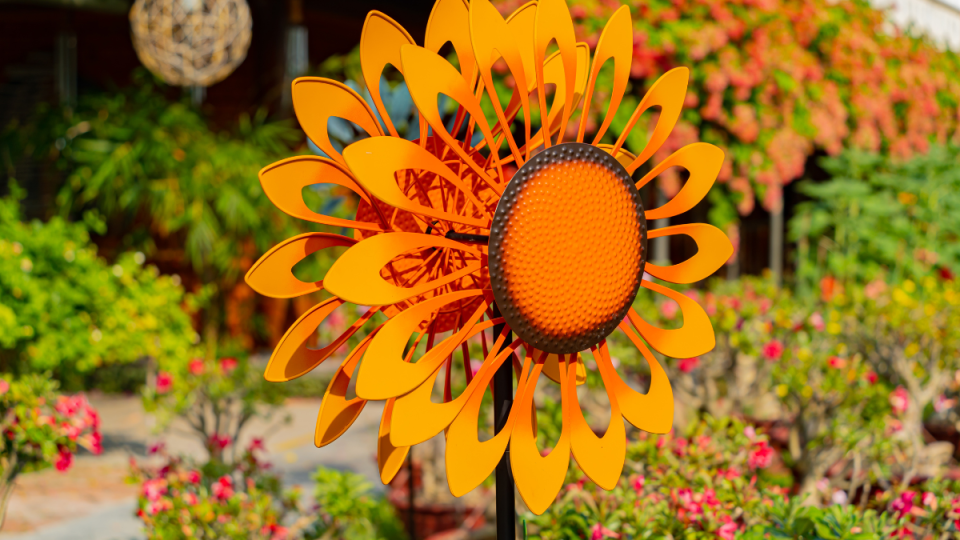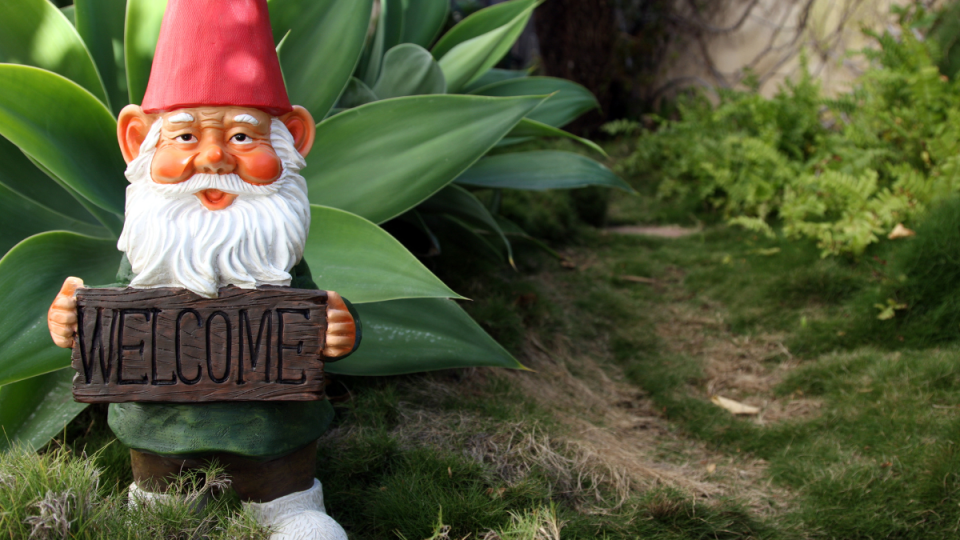Protect Your Yard and Garden Decor With These Tips From Experts: Prevent Rust, Discoloration and More
If you enjoy decorating your yard and garden and take pride in adding touches of your own personal style by accessorizing these spaces, you know how frustrating it can be to find that they’ve started to rust or crack. From statues to garden stakes to light displays, it’s typically not inexpensive to purchase these items brand new. Instead of constantly having to replace them, you’ll want to do what you can to protect their quality for as long as possible. This is why we asked experts how to prolong the life of accentual decor to ensure it can weather the great outdoors!
Risks faced by outdoor accessories
The materials that make our beloved yard and garden decor are not indestructible, and they won’t last forever. Different risks are posed by the elements and nature in general, and this can wear them down over time.
Metal
“Metal, as you’d expect, is prone to rust and corrosion, especially when exposed to moisture and salts,” says Gavin Warwick of Boise Landscaping. “Painted or coated metals can also chip or peel over time.”
Moisture and oxygen can wreak havoc on metal as the iron oxidizes, which often weakens the structure of metal objects making them look aged and deteriorated, adds Wyatt Underwood, founder of outdoor manufacturing company Playground Expedition.
Plastic
Experts say that ultraviolet rays from the sun as well as significant or sudden temperature changes can lead to the color fading in plastics, and the material can become brittle and eventually crack over time. Resin is very similar to plastic and faces these same issues.
Glass
Warwick points to limescale as one of the most common issues with keeping glass outside. Limescale, he explains, is formed when water that’s high in certain minerals like calcium and magnesium evaporates and leaves behind the residue which builds up over time. It eventually becomes a cloudy white film that can be hard to remove and diminishes the clarity of the glass. “Glass is also naturally brittle, so things like falling branches and hailstorms can also cause breakage,” Warwick says.
Wood
Wood is prone to rotting. Warwick explains that it is also susceptible to insect damage and warping from moisture, and UV rays can degrade the surface and cause splintering and discoloration.
Stone
“Porous stones in particular will more easily absorb water, and as such crack in freezing conditions. Due to this water absorption, they’re also prone to moss and algae growth in damp areas,” says Warwick. Even less porous stones and concrete face risks over time including surface wear and discoloration.
How to preserve the life and quality of outdoor accessories

Related: No Need to Toss Your Rusty Garden Tools: Here’s How to Clean Them According to Garden Experts
1. Safe cleaning
Living outside means these items will get dirty from time to time, and while you can certainly keep them clean, you should be informed about the best ways to clean your products without damaging the material.
Metal
Experts agree that soap and water is an effective cleaning solution for metal products, but for metal that is showing signs of rust, look for specialized metal cleaners that are equipped to clean despite tarnish.
“Rinse thoroughly and dry completely to prevent rust,” adds Underwood. “For rust removal, use a mixture of vinegar and baking soda, then rinse and dry.”
Plastic
Warm water and soap or even mild detergent will work to clean plastic and resin, but practice caution and avoid abrasive materials or scrubbing. Instead, use a soft cloth or sponge. If you’re tackling tougher stains, try this process with a mixture of water and baking soda.
Glass
“Use either commercial glass cleaners or a solution of half white vinegar and half water to get a streak-free shine,” offers Warwick. You should also use a soft towel to prevent scratches.
Wood
While soap and water can work for normal stains, Warwick says tougher stains can be addressed with commercial wood cleaners. However, he cautions to not pressure wash wood as it can lead to damage. If possible, try to just gently dust any debris off of your wooden items.
2. Proactive preservation

The best thing you can do to keep your outdoor decor in tip-top shape is to stay ahead of the risks the items are facing outdoors. Here are the strategies experts recommend for keeping these materials resistant and looking like new.
Related: This Condiment Will Remove Rust From Patio Furniture Without Any Harsh Chemicals
Metal
“Apply a rust-resistant primer and paint or a clear sealant to protect against moisture,” suggests Underwood. “Regularly inspect for rust and touch up as needed. Store metal accessories indoors during extreme weather conditions.”
Warwick notes that rust-resistant paint only protects against rust, so to guard against peeling and chipping as well, he suggests using clear sprays.
“For mild protection, a clear enamel spray will be enough. If the surface is exposed to water more often though, it’s best to use a polyurethane coating,” he says. “Alternatively, for decorative items, clear lacquer provides a glossy finish, so it’s great for protecting decorative items while enhancing their appearance. And of course, even with these safeguards, try to limit the exposure to harsh conditions. Store it indoors during winter or at least use covers.”
Plastic
Try to keep plastic and resin items in areas with more shade to keep them out of the sunlight and protect them from UV rays. If this is not an option, there are UV-resistant sprays designed to prevent sun damage.
“For temperature fluctuations, during extreme freezing temperatures or during heatwaves, it’s best to move plastic accessories to a storage area like a garage or a shed,” says Warwick.
Glass
Glass only really needs to be cleaned around once every two weeks to prevent limescale, Warwick notes, adding that you can protect glass from breakage using fitted covers or tarps, umbrellas or canopies.
Wood
“For wood, the key is to choose hardwoods like teak and cedar, which are better able to resist outdoor conditions,” says Warwick. “You’ll also want to apply a waterproof sealant annually.”
Stone and concrete
Since water absorption is the key cause of the issues, simply seal the stones and reapply the sealant every few years, Warwick says. To further ensure no algae growth, clean at least once every few months.
Keep reading for more outdoor decor tips!
DIY Outdoor Garden Decor Made From Thrifted Finds Will Pretty Up Your Yard
Container Garden Ideas: These Displays Are Inexpensive, Easy to Make & Simply Stunning
Budget Small Garden Ideas Transform Any Sized Outdoor Space Into a Green Oasis!

